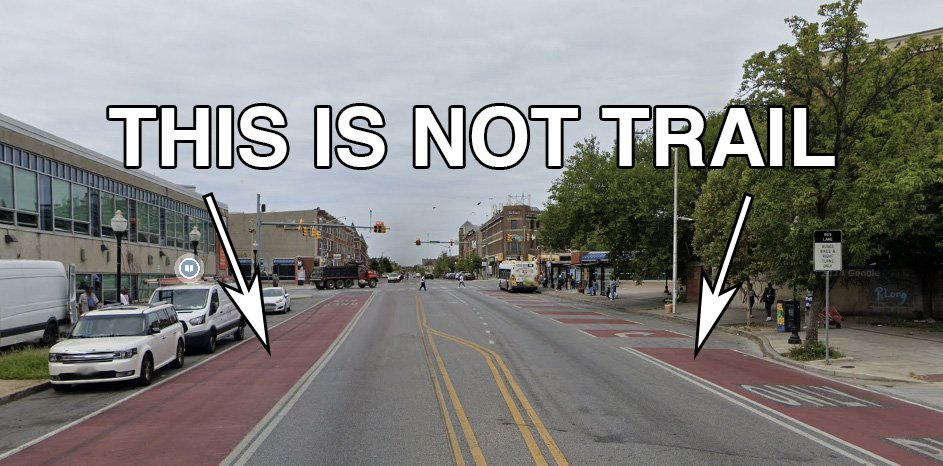Baltimore’s biggest challenge to adopting a comprehensive transportation vision is a lack of political will. We work to educate citizens about transportation and land use policy because these areas have a huge impact on our quality of life and yet consistently have very few city residents who advocate in these arenas. Everyday critical decisions are being made about what types of housing and business get built in your neighborhood, which bus stops get removed, and which streets get a crosswalk or a bike lane without a diverse cross section Baltimore residents always at the table or in the loop. When we abdicate responsibility to show up in these spaces and ask for what we want and need, we hand over a lot of power. Advocacy is first and foremost about shifting political power. For Bikemore, that means building power for citizens, organizations, and elected officials that believe that a healthy and safe city is one that prioritizes people over cars.
This summer, through your support, we created a huge shift in power. We advocated successfully on behalf of city residents who believe in a walkable, bikeable neighborhood, and who want to see more high quality all ages facilities being installed throughout all of Baltimore. We saved Potomac Street from a knee jerk removal and instead forced stakeholders back to the negotiating table. The amended design leaves something to be desired — mainly removing space that could used for storm water treatments in future phases by eliminating the buffer. So while imperfect, it retains a two-way all ages facility. Something you asked for us to fight for. Something we were able to win.
With changes in DOT leadership, the future of many of these streets projects is unknown. Planned and funded protected bike lanes on Madison and Monument remain incomplete — leaving residents who are still mourning the loss of the Red Line without any realistic East-West transportation connection. Lanes on Preston and Biddle sit unfinished. This lack of follow through does significant damage to building goodwill toward residents in getting them to support more active transportation projects. With markings unfinished, it creates a confusing mess. Who can support something when the roll out and construction invites this level of chaos?
We’ve had the debate about whether bikes belong in cities. The debate is over. Bikes belong. With a state run public transit agency that is underfunded and thus unreliable, building out a comprehensive biking and walking network is something that is within our locus of control. For the same price as the bridge to Harbor East, we could use those local dollars to leverage state and federal funding to build a protected bike lane network that connects 85% of Baltimore neighbors. Why wouldn’t we invest in something that makes healthy food, high quality schools, jobs and healthcare more accessible? That contributes by improving air quality and public health for all of Baltimore?
Success in advocacy is sometimes hard to quantify. Sometimes the shift is subtle, and hard to see. But perhaps the biggest metric for me came last week when Councilman Cohen and Councilman Dorsey addressed the failings of the Boston Street Multimodal plan head on in a video. Two years ago city council did not share our views on Complete Streets. Now we are on track to introduce one of the most progressive Complete Streets Bill in the country. That’s a big shift in a short time. We did this together. So feel proud of what we’ve accomplished, and let’s set our sights on future wins for people who walk and bike.
Want to continue to help build a force for biking in Baltimore? Donate today. Your support is essential in providing the resources necessary to advocate for a healthier, safer, more livable bicycling city.
RELATED NEWS & EVENTS


